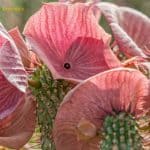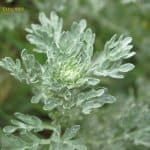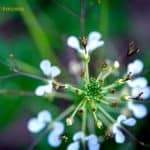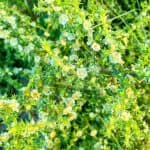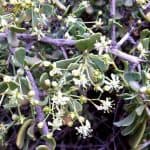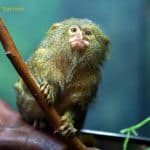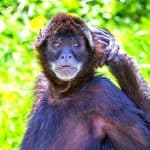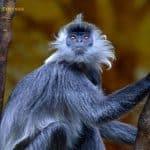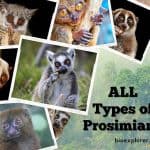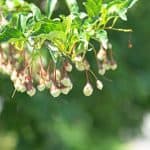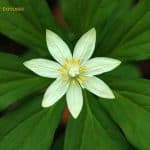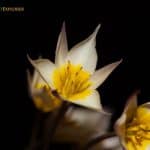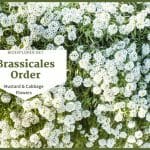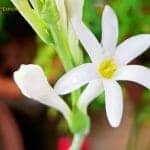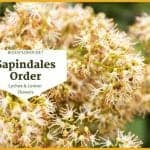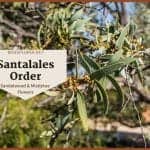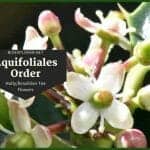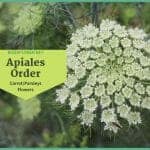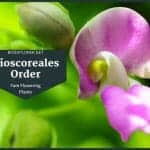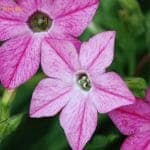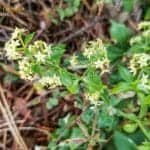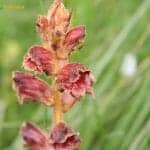science - search results
If you're not happy with the results, please do another search
Top 15 Immunology News of 2021
The 2021 discoveries in Immunology showcase the recent developments and their relevance during the upsurge of COVID-19 cases. This treatise describes the development of immunology as a scientific discipline focused on its foundation. Let us glance at these 2021 research outcomes from a broader perspective.
Top Biotechnology News of 2021
These 2021 biotechnological events provide us with a thorough understanding of our most recent developments in the fields of Synthetic Biology, Stem cell and Tissue engineering research, Genome editing and decoding the entire human transcriptomics, Construction of cell-free vaccine, and various other wonders.
Top 15 Botany News of 2021
Top botany news of 2021 give us a deep insight into our latest advancement in botany and plant science related to the evolutionary aspect, conservation of endemic species, global warming, and the mechanism to fight against them.
Top 15 Cell Biology News of 2021
This news series in cell biology 2021 gives us a detailed overview of the recent advancements. Let's explore the top 15 cell biology news of 2021.
Top 15 Ecology News of 2021
This series of 2021 ecology news gives us a detailed overview of the recent development in this field. Commencing with climate change, global warming, alternative ways for renewable energy resources, the role played by scavengers in our society, and other global aspects of management and nature-dependent climate solutions.
Top 15 Microbiology News of 2021
These topics focus on the discoveries and developments in Microbiology in 2021. Research and developments on various topics, such as engineered bacteria, oil-degrading bacteria, and symbiotic relationship between root colonizing bacteria and host plants, have been included here.
Siberut Macaque
The Siberut macaque (Macaca siberu) is an endangered macaque species native to the island of Siberut in Indonesia. It was previously thought to be conspecific with the Pagai Island macaque (Macaca pagensis), which is paler overall, but this arrangement was polyphyletic.
Guyanan Red Howler Monkey
The Guyanan red howler monkey (Alouatta macconnelli) also known as Guianan Red Howler, is a New World monkey native to Guyana, Suriname, Trinidad, Venezuela, and Brazil. Each troop has a hierarchy consisting of a single dominant alpha male, sometimes with 1 or 2 subadult males. The rests are females and their young.
Alta Floresta Titi
The Alta Floresta titi is a distinct but unnamed form of titi (Plecturocebus) rediscovered in 2019 in Chapada dos Parecis, a plateau in the far south of the Brazilian state of Rondônia. This species lives exclusively between the Teles-Pires and Juruena rivers in Mato Grosso.
Tana River Red Colobus
The Tana River red colobus (Piliocolobus rufomitratus), also called the eastern red colobus, is a critically endangered primate species in the Cercopithecidae family. The Tana River red colobus monkeys are the only one of 18 species of red colobus that do not live in the tropical rainforest.
Baboons
Baboons are another breed of Old-world monkeys classified under the genus Papio. There are 6 types of baboons. Explore all about baboons here.
What Do Goldfinches Eat? Explore Goldfinch Diets, Hunting & Eating Habits
Goldfinches are mainly omnivores. Explore in detail what do Goldfinches eat by their types, hunting techniques, what eats Goldfinches & more.
Langurs
Langurs are Old-world monkeys classified under the Colobinae family along with other leaf-eating monkeys, including Colobus and proboscis monkeys. Explore langur characteristics and all types of langur species here.
Tapanuli Orangutan
The Tapanuli orangutan (Pongo tapanuliensis) is an orangutan species restricted to the southern Tapanuli on the island of Sumatra in Indonesia. It was described as a distinct species in 2017. The three species of orangutans can be difficult to tell apart.
Panamian Monkeys
Panama is home to 8 species of New World monkeys, which comprise 6 genera. Examples of these species include the Panamanian night monkey (Aotus zonalis), the brown-headed spider monkey (Ateles fusciceps), and the mantled howler monkey (Alouatta palliata).
Explore 15 Remarkable Adaptations of Ocean Inhabitants
In the realm of flora and fauna, the ocean presents itself as an immense tapestry of diverse habitats. Embark on a journey through the 15 most extraordinary adaptations of ocean creatures.
Old World Monkeys Vs. New World Monkeys
Old-world and New-world monkeys are two types of monkeys within Primates. Explore all differences between them from all aspects here.
Hoodia Cactus
The Hoodia cactus is a flowering plant of the family Apocynaceae. It has been called one of the 21st century’s wonder plants. Hoodia gordonii shares many similarities with the cactus but does not belong to the cactus family. Instead, the Hoodia cactus belongs to the milkweed family.
White Wormwood
White Wormwood is a perennial shrub of the order Asterales. This shrub can grow to a height of 8-16 inches. The White Wormwoods are chamaephyte. The plant is also aromatic. In addition, white Wormwood produces essential oils.
Asian Spider Flower
Cleome viscosa is an annual herb that belongs to the Cleomaceae family. It is synonymous with Polanisia viscosa. The extracts from the flower and leaves of Cleome viscosa manifest effective antimicrobial activity.
Saltwort
Saltwort is an annual herb from the Amaranth family. The flowers of the Saltwort are radially symmetrical and possess 5 tepals fused into a cup or tube. Usually, there is one flower per axil of the bract.
Salt Tree
The Salt tree is a drought-tolerant shrub of the Order Sapindales. It can grow up to 2.5 meters. This plant is native to the Northern African desert areas. The Salt tree has fruits of a triangular drupe.
Types of New-World Monkeys
The term “New World monkey” is a broad label that refers to any species that falls under one of the five taxonomic families of the Ceboidea superfamily: Cebidae, Callitrichidae, Atelidae, Pitheciidae, and Aotidae. Explore all New-World monkeys and their characteristics.
Types of Old-World Monkeys
The term “Old World monkey” refers to the primates that make up the taxonomic family known as “Cercopithecidae”. The family is split into two subfamilies: Cercopithecinae, which has 78 species, and Colobinae, which has 82 species. Explore all about old-world monkeys here.
Peruvian Monkeys
Peru is home to 52 species of New-World monkeys; 13 of the species are endemic to the nation. Explore all monkeys of Peru here.
Pygmy Marmoset (Finger Monkey)
The pygmy marmoset (smallest monkey), genus Cebuella (also known as Finger Monkey), is a small genus of New-World monkeys endemic to the tropical rainforests of the western Amazon Basin in South America. Pygmy marmosets are also highly territorial, using scent glands to mark territories of up to 100 hectares.
Geoffroy’s Spider Monkey
Geoffroy's spider monkey (Ateles geoffroyi) also called the Central American spider monkey or black-handed spider monkey, is a species of spider monkey. The species name geoffroyi is honored by Étienne Geoffroy Saint-Hilaire, a French naturalist. The Geoffroy's spider monkey consists of five recognized subspecies residing in various parts of Central America and Mexico. These include the Hooded spider monkey (A. g. grisescens) in southern Mexico, the ornately-patterned Ornate spider monkey (A. g. ornatus) in Costa Rica and Panama, the Yucatan spider monkey (A. g. yucatanensis) in the Yucatan Peninsula, the Mexican spider monkey (A. g. vellerosus) in Veracruz, and the nominate Nicaraguan spider monkey subspecies (A. g. geoffroyi) found in Nicaragua, Honduras and northern Costa Rica.
Black-Headed Spider Monkey
The black-headed spider monkey (Ateles fusciceps) is a species of New-World monkey native to Central and South America. The species name "Ateles" is derived from the Greek word "ateleia" meaning imperfect or incomplete. It was likely chosen because these monkeys do not have a thumb. There are 2 additional sub-species of black-headed spider monkey namely Brown-headed spider monkey (Ateles fusciceps fusciceps) and Colombian spider monkey (Ateles fusciceps rufiventris).
Explore Types of Greenhouse Gases As Agents Of Climate Change
Behind the struggle to combat increasing global temperature & rapidly changing climate lies the excessive production of greenhouse gases that eventually get trapped in the atmosphere. Let's explore what greenhouse gases are, their types, and, most importantly, their contributions to climate change.
Top 15 Anatomy News of 2021
These 2021 noteworthy advancements and discoveries in Anatomy also speak to scientists' increased interest in the brain's structure, function, and disorders. Explore the top 15 anatomy and physiology news of 2021.
Annamese Silvered Langur
The Annamese langur is another Old-World monkey in the subfamily Colobinae. Annamese langurs are covered in thick, gray fur. They have dark faces, and the space around the eyes is pale and forms a ring, often in the flesh. Trachypithecus margarita is a monotypic species as it has no subspecies.
Prosimians
Prosimians are a grouping of primates currently made up of the species (both living and extinct) of two main taxonomic categories. Explore all types of prosimians here.
Types of Apes
There are two main types of apes: "lesser apes" and "great apes". Lesser apes include mainly all gibbon species, whereas the Great apes include orangutans, gorillas, chimpanzees, and bonobos.
334 Types of Monkeys
Monkeys are classified into two main groups: Old-world monkeys and New-world monkeys. Explore all 334 different types of monkeys and their facts here.
Japanese Snowbell
The Japanese Snowbell is a deciduous tree that can grow to 15-25 feet. The leaves of Styrax japonica are alternate and simple. They are broad-elliptic to elliptic-oblong. These leaves are medium to dark green with a measurement of 2.5-9 cm. long and 1.3 -4 cm wide.
Japanese Canopy
Paris japonica is a slow-growing perennial plant native to Japan with a height of 6-12 inches. Japanese Canopy plants have white and showy flowers in a pedicel. The flowers are star-shaped with 10 tepals.
Edulis Tulip
Amana edulis (formerly Tulipa edulis) is a bulb-forming perennial with a flower that resembles a tulip. The Amana edulis plant is about 15 cm. It is native to Japan.
Top 15 Biochemistry News of 2021
This top 15 Biochemistry News of 2021 series emphasizes various biochemistry research and developments such as the relationship between enzyme and substrate concentration, the mechanism for RNA-protein interaction and more.
Order Vitales / Grapes & Boston Ivy Flowers
Members of Vitales have small flowers and simple, pinnate, or palmate leaves. The tendrils and the inflorescences are opposite to the leaves. The grapes, Boston ivy, and Chinese Virginia creeper are the example species of the order Vitales.
Order Oxalidales / Wood Sorrel Flowers
Oxalidales (Wood sorrel) order of flowering plants is annuals, perennial herbs, lianas, shrubs, and trees distributed in temperate and tropical regions. Oxalidales plants have compound leaves, actinomorphic and bisexual flowers, usually 4-5 sepals and petals.
Top 10 Microbiology News of 2020
Microbiology News 2020: 2020 was the year of the horrific pandemic that influenced all aspects of our lives. Unfortunately, the scientific community was impacted too. Still, though the whole world scrambled to study the new virus, many scientific teams have made breakthroughs in other areas of microbiology and virology.
Brassicales / Mustard & Cabbage Flowers
Brassicales is an order of flowering plants comprising trees, herbs, shrubs, or lianas primarily distributed worldwide. Brassicales have glucosinolates or mustard oils, small stipules, often bisexual flowers, inflorescences in racemose, and nectaries found between the petals and the stamens. The known plants of Brassicales are mustard, cabbage, capers, mignonette, and nasturtiums.
Order Ceratophyllales / Hornwort Flowers
Ceratophyllales is an order of dicotyledonous flowering plants that are cosmopolitan in distribution. The Ceratophyllales members are aquatic herbs having whorled, dichotomously branched, and serrulate leaves. Species of Ceratophyllales are aquatic herbs. Economically, they are used as a protective cover in fisheries and aquarium plants.
Polianthes tuberosa
Polianthes tuberosa, commonly known as tuberose, is possibly native to Mexico. It's considered iconic and has a long cultural history dating back to pre-Columbian times. The Agave genus (Agavaceae) includes about 200 species.
Top 15 Evolutionary Biology News of 2021
This 2021 series of top 15 evolutionary biology news gives us a detailed overview of the recent development in this field. Commencing the evolution of coccolithophores, the adaptability of crocodiles, the creation of new therapeutic targets for treating age-related disorders in people, the epigenetic evolution of the cerebellum, and more.
Order Poales / Grass, Bamboo and Pineapple
Poales species are monocots with two-ranked leaves, much reduced flowers, dry and small stigma, and well-developed style. The Poales flowers are unisexual, bisexual, or sterile and pollination of the members is via anemophily or entomophily. The famous bamboo, pineapple, Yellow-eyed grass, Stream Bogmoss, and Palmiet are found under Poales order.
Order Gunnerales / Rhubarb & Resurrection Flowers
Gunnerales order includes flowers with ellagic acids, abundant plastids in their phloem cells, hydathodal teeth in the lamina margins of the leaf, and small flowers. The Gunnerales plants are dioecious and generally pollinated via wind. The giant rhubarb and the resurrection plants are found under the Gunnerales order.
Order Dilleniales / Guinea Flowers
Dilleniales is a dicotyledonous flowers have a pantropical distribution that extends to all of Australia. The flowers of Dilleniales are often showy and bisexual. Among the species of Dilleniales are the guinea flower and the stone leaf plant. The species of Dilleniales have simple and alternate leaves, rarely present stipules, 5-merous petals and sepals, and numerous stamens united into bundles.
Order Sapindales / Lychee and Lemon Flowers
Order Sapindales belongs to the dicotyledonous flowering species which are distributed in the tropics and the temperate regions. Most plants of Sapindales are woody with resin ducts in their bark or wood, compound or lobed leaves, and polypetalous flowers. They are polygamous, with most bisexual flowers functionally unisexual. Among the critical species involve cashew, mahogany, lemon, and lychee.
Order Santalales / Sandalwood & Mistletoe Flowers
Santalales is one of the most prominent groups of parasitic flowering plants, with species distributed worldwide. Santalales involve plants that form haustorium to penetrate the host's barks and roots, plants that undergo photosynthesizing activities in the stem, and members with usually simple and exstipulate leaves. Sandalwood and mistletoes are just two of the known plants under Santalales.
Order Cornales / Dogwood Flowers
The dogwood order of flowers, Cornales, is basal among asterids. Cornales is relatively small, but members are morphologically diverse and are cosmopolitan in distribution. Cornales plants are mostly woody with simple or compound leaves, small flowers, floral parts in multiples of four, and generally bisexual. Many of the species of Cornales, like the flowering dogwood and Lindley’s blazing star are of ornamental value.
Order Aquifoliales / Holly & Brazillian Tea Flowers
Aquifoliales is the holly order of flowering plants, including the common holly and Brazillian tea plants. They are primarily distributed worldwide with usually evergreen trees and shrubs. The Aquifoliales leaves are typically alternate, exstipulate, and lack leaf sheath. American holly, Churnwood, and Japanese helwingia are Aquifoliales flowers.
Order Apiales / Carrots and Parsleys Flowers
Apiales are an order of flowering plants belonging to Class Magnoliopsida. The species of order Apiales are distributed worldwide and involve important and common plants like carrot, parsley, and ginseng.
Order Dioscoreales / Yams Flowering Plants
Order Dioscoreales is a family of flowering plants which most commonly include herbaceous plants. The famous yam Plant order consists of 21 genera and 900 species worldwide. The most important plants of this plant order have a massive number of medicinal and food properties. Yams, Bluethread, and Colic Roots are examples of flowering plants in this order.
Nicotiana
Discover the rich history and stunning beauty of Nicotiana species in Mexico, featuring night-blooming flowers, ancient rituals, and their enduring cultural significance.
Madder
Madder (Rubia tinctorum) is a perennial herbaceous plant that belongs to the Rubiaceae family of coffee and bedstraw. Madder flowers are tiny and between 3 and 5 mm in diameter. Each flower has 5 petals in shades of yellow, and they bloom in summer.
Order Piperales / Paleoherb Spicy Fragrant Flowers
The Piperales are paleoherbs, which are plants that are similar or closely related to the monocots. Piperales order is divided into 3 families. Piper nigrums, birthworts, Lizard-tail, and Aristolochia are some of the good species in Piperales.
Order Canellales / Cinnamon & Shrub Flowers
Canellales is the Order of flowering plants that belong to the magnoliids clade, an angiosperm tree early branch. Canellales include flowering species such as Wild Cinnamon, Chupacallos, Saro plant, Mountain Cinnamon, African Greenheart, Pepper Tree, Northland Horopito & many more.
Top 10 Immunology News of 2020
The immune system is one of the most complex and multi-layered systems of our body. Explore the top 10 discoveries in immunology for 2020 here.
Broomrape
Broomrape, commonly called Orobanche, is a genus of more than 200 species of herbaceous plants native to the temperate northern hemisphere. These plants are best known by their straw-yellow stems, which are completely free of chlorophyll and have blue, white, or yellow dragon-like flowers.



















